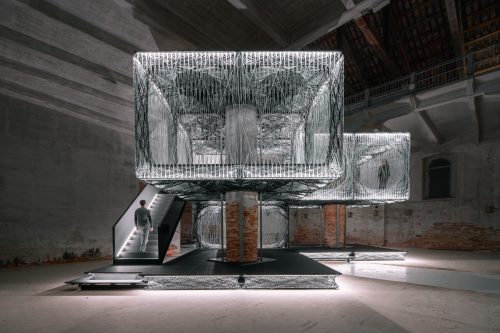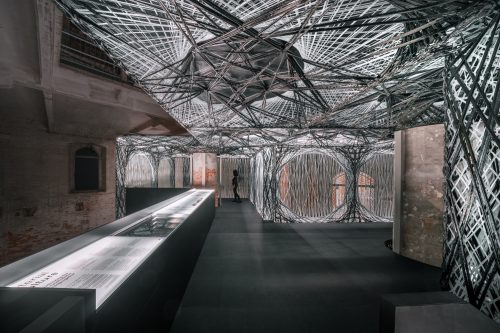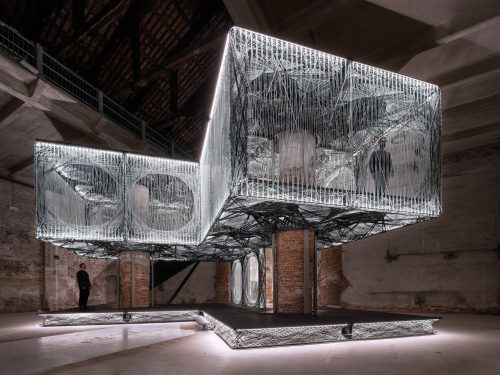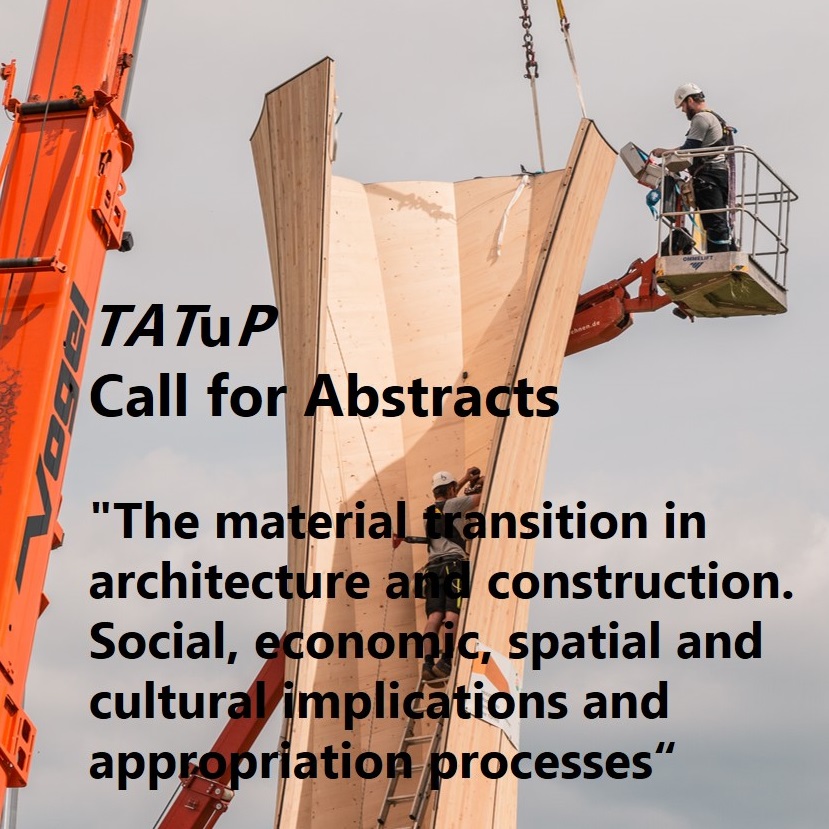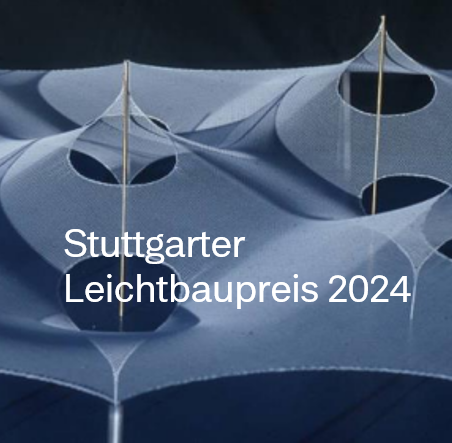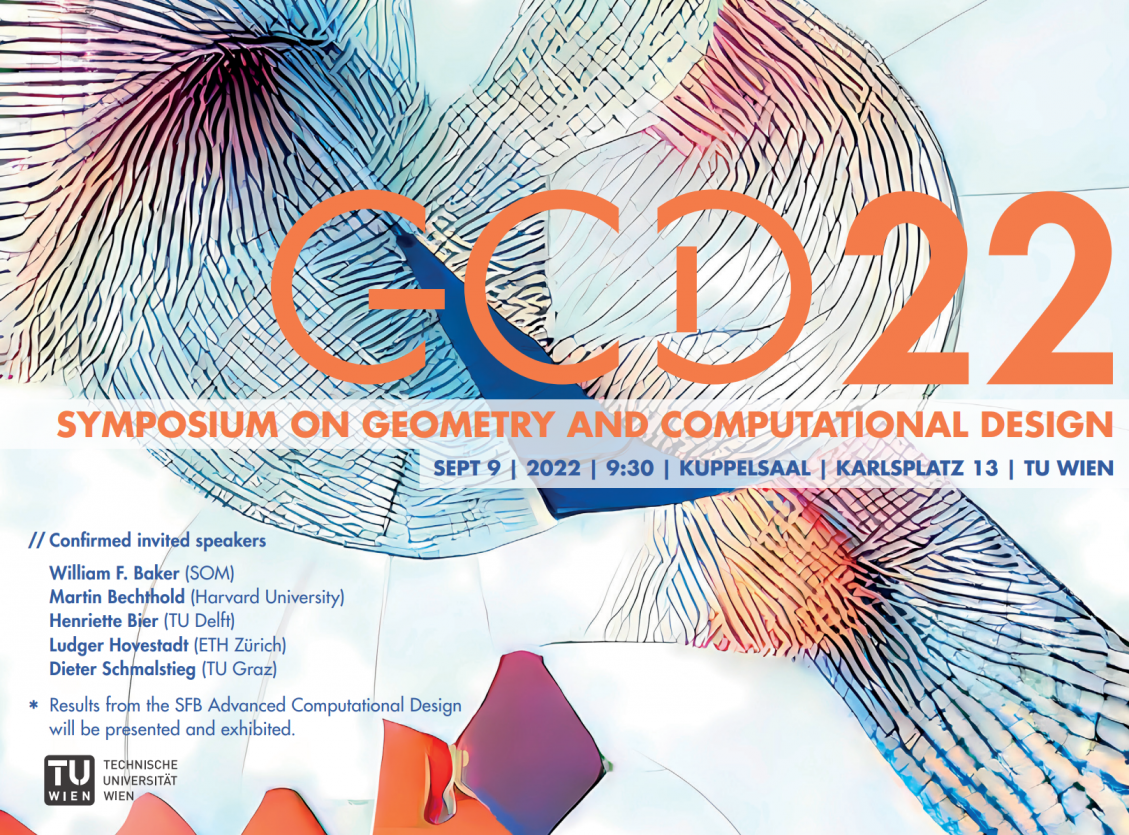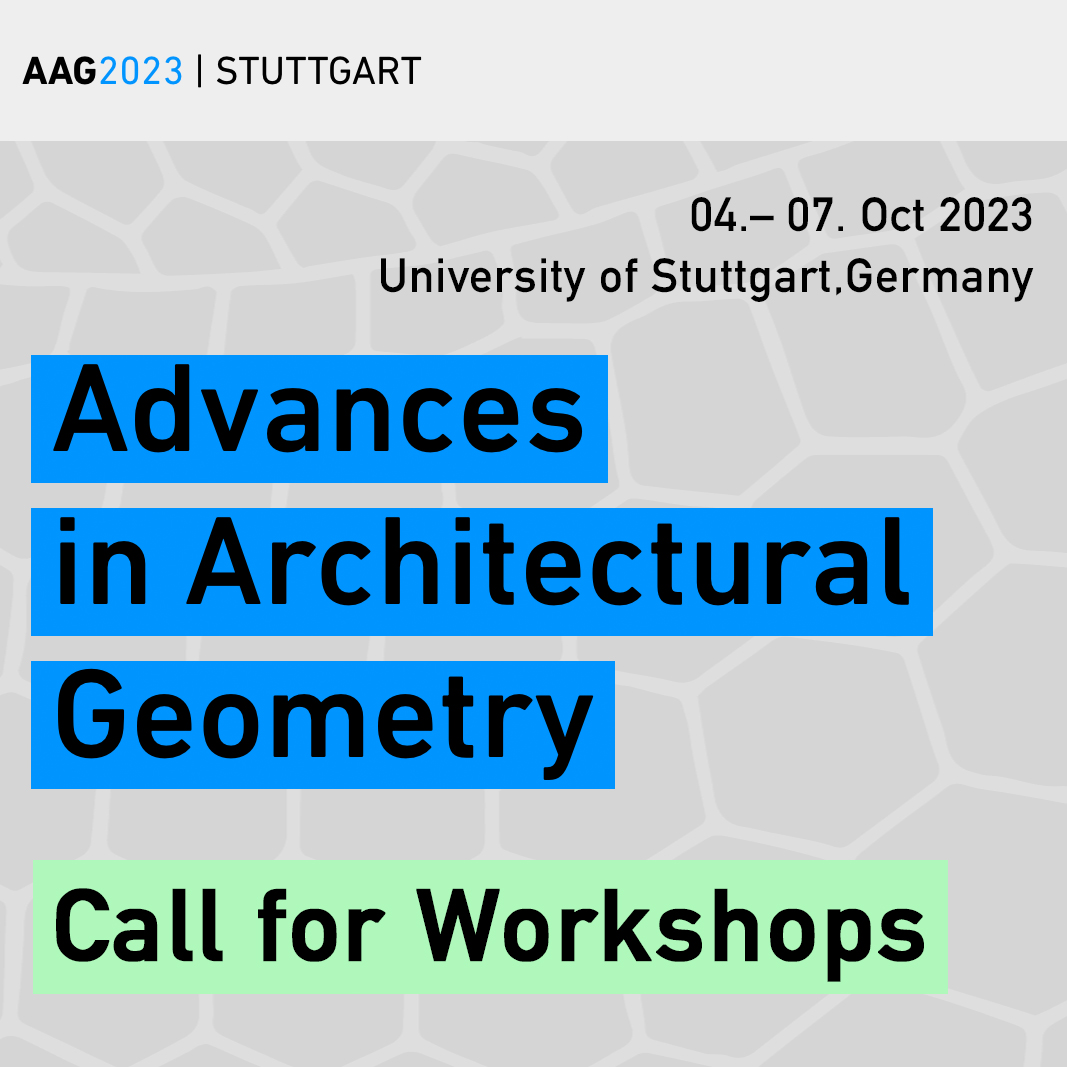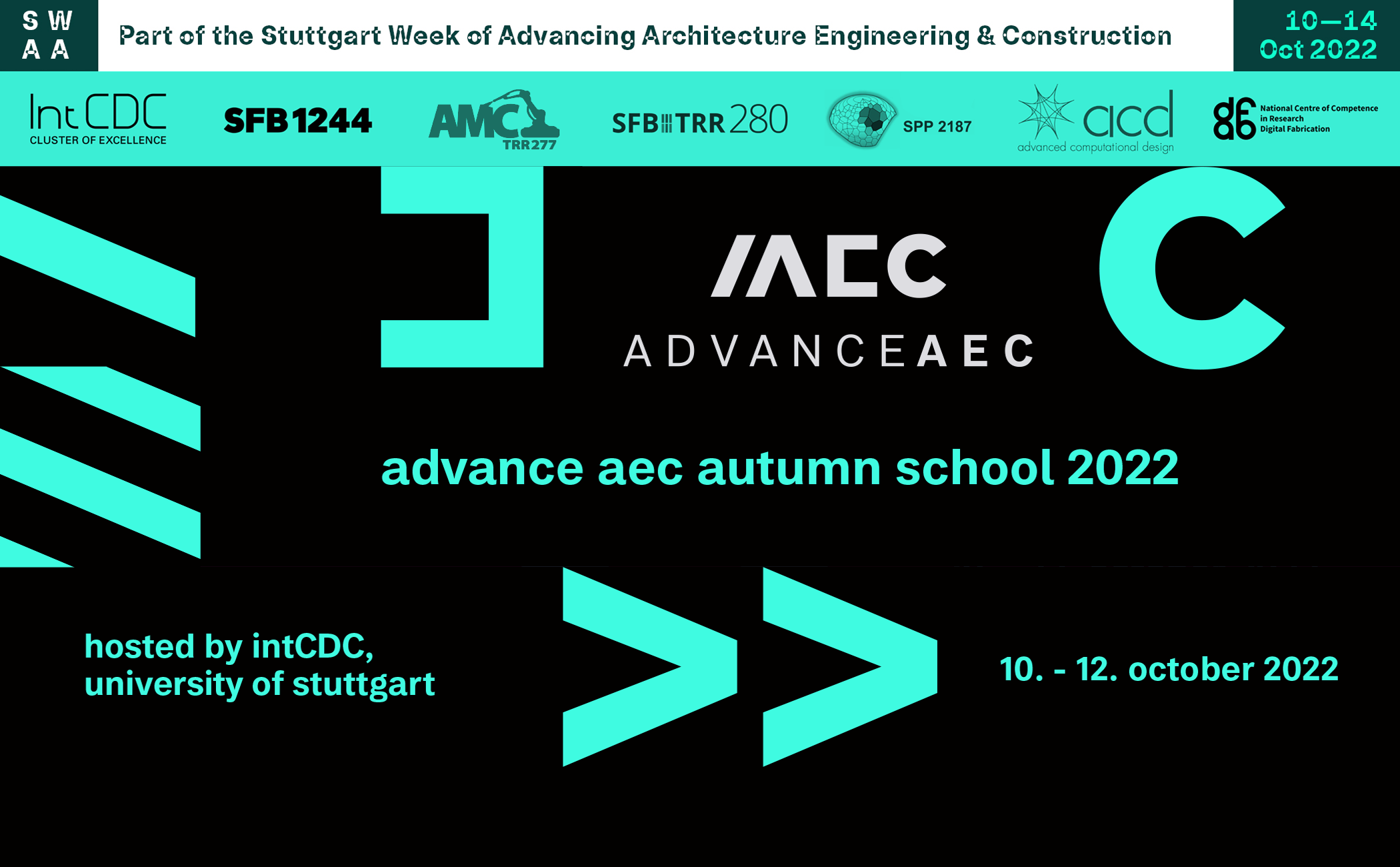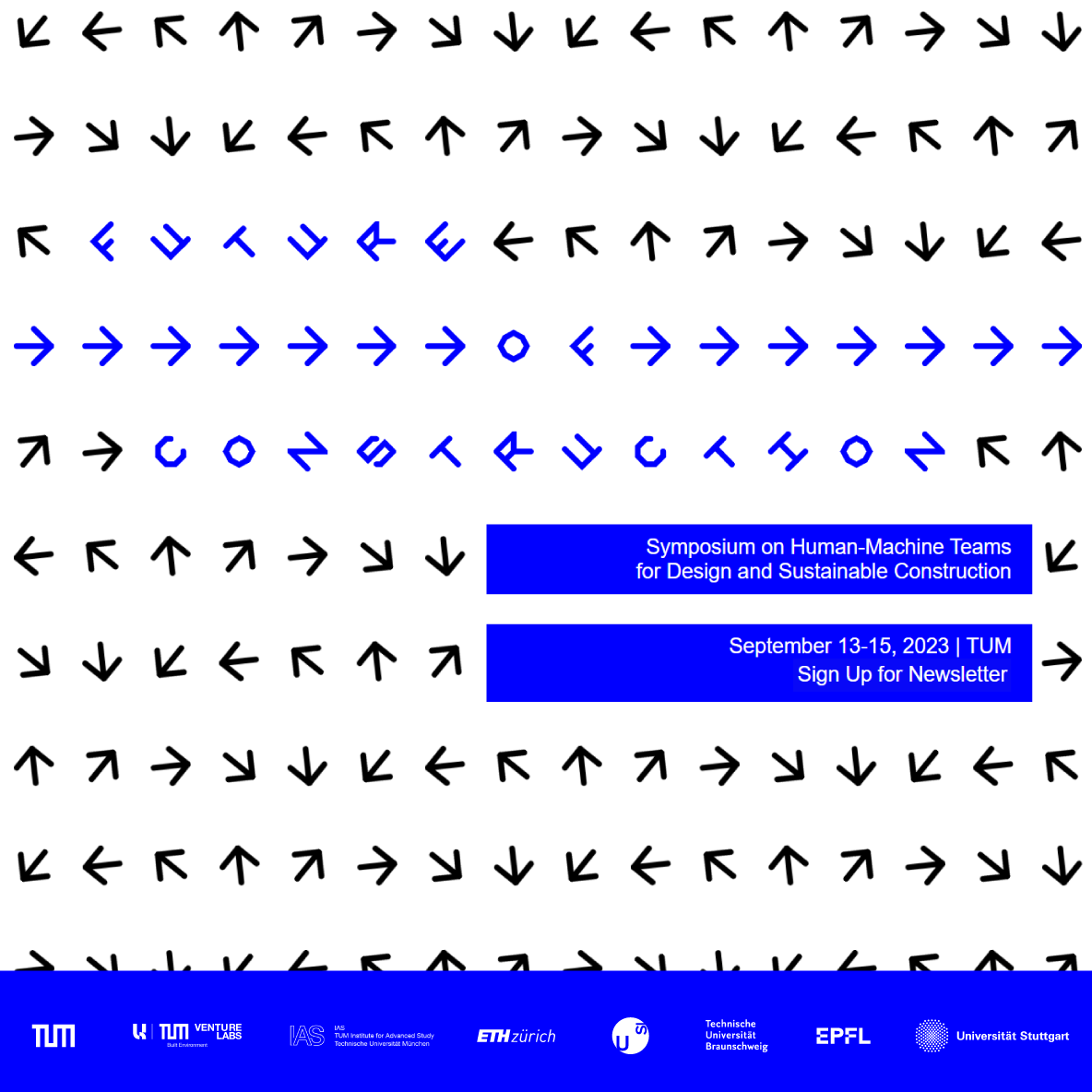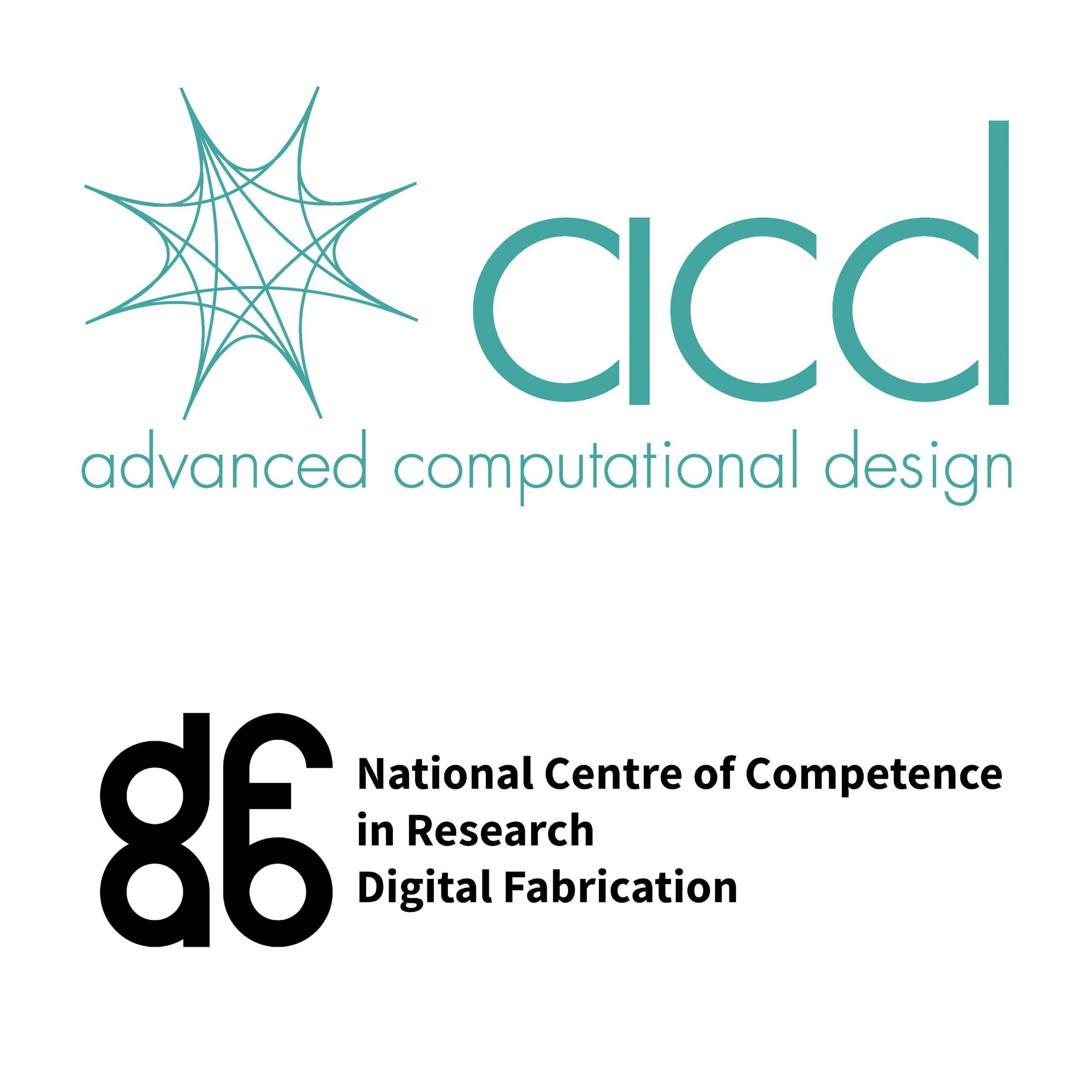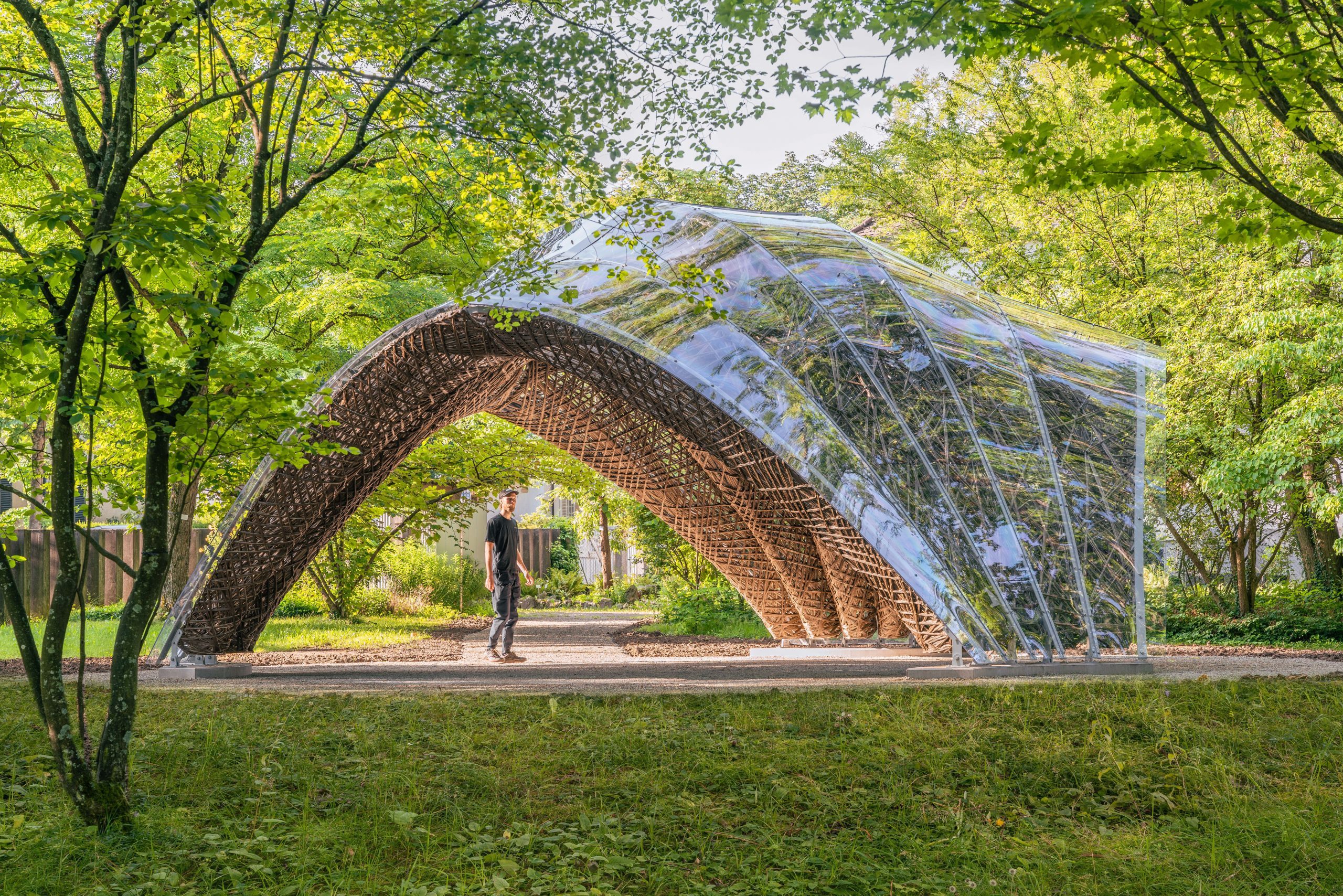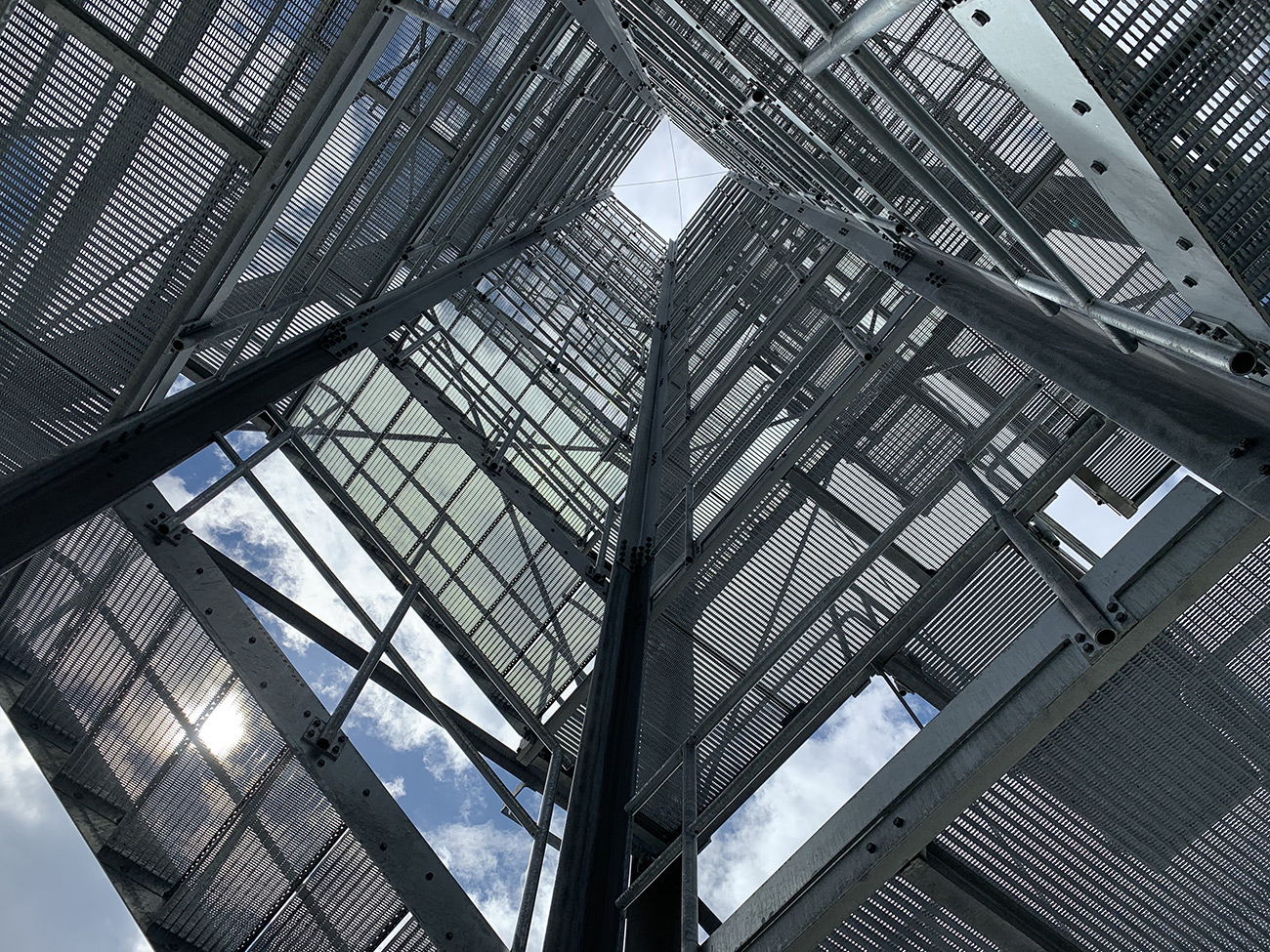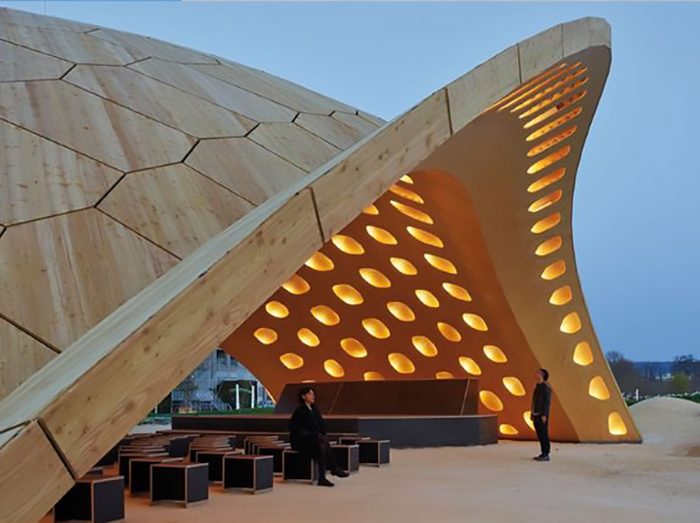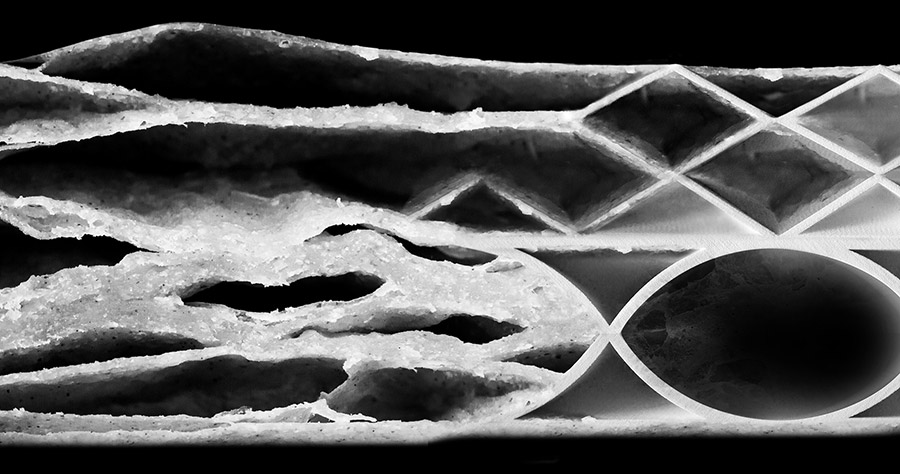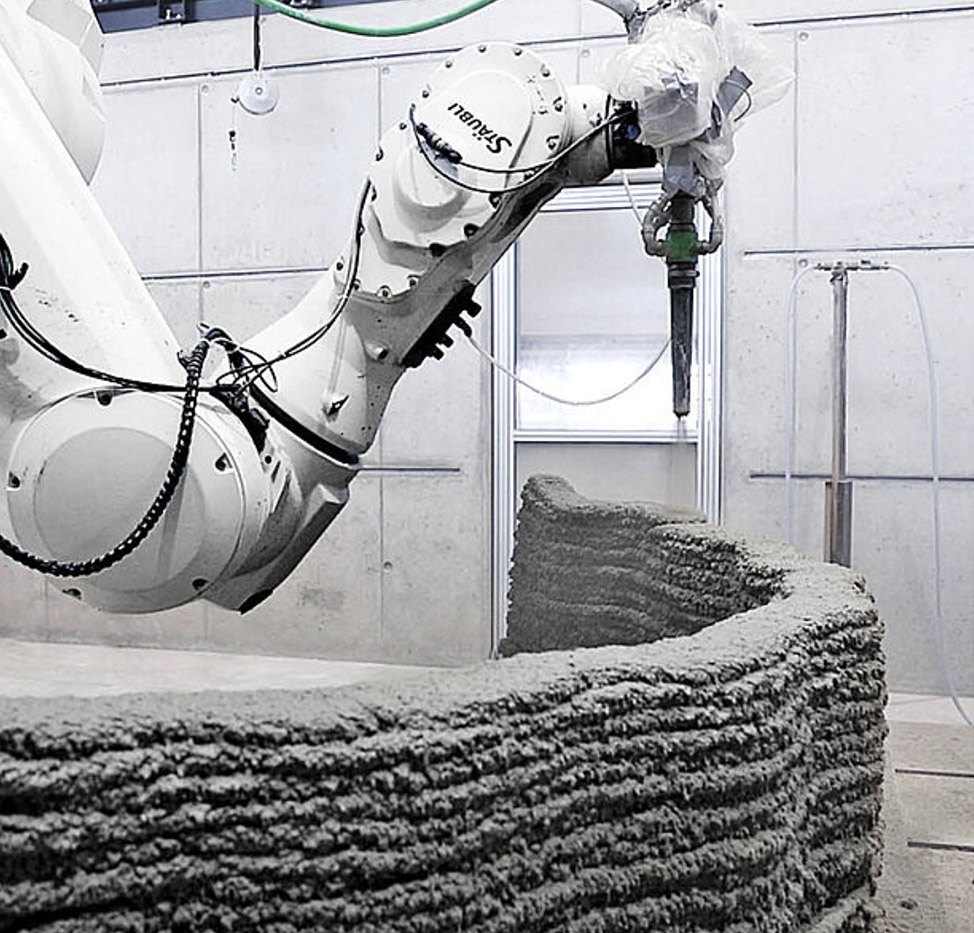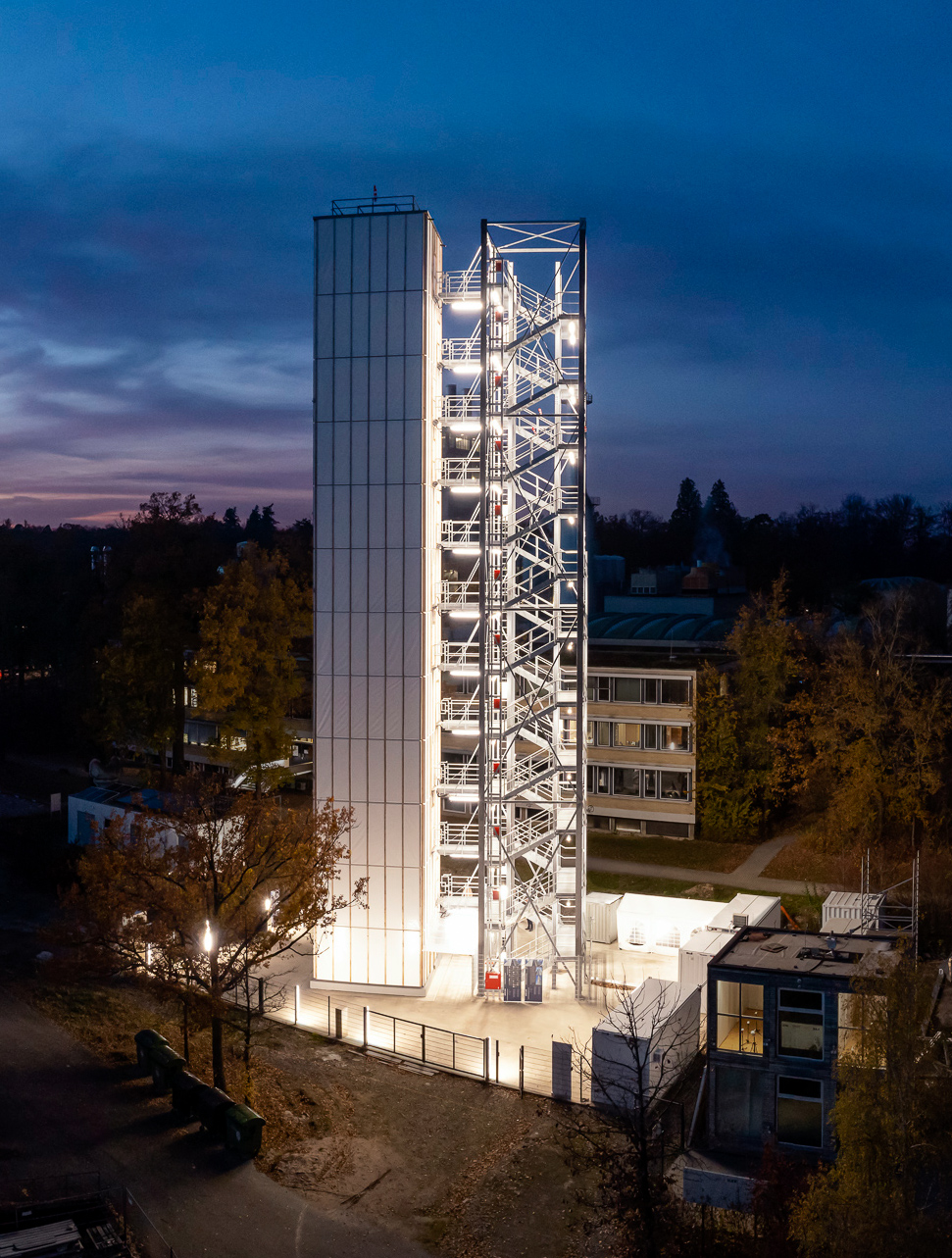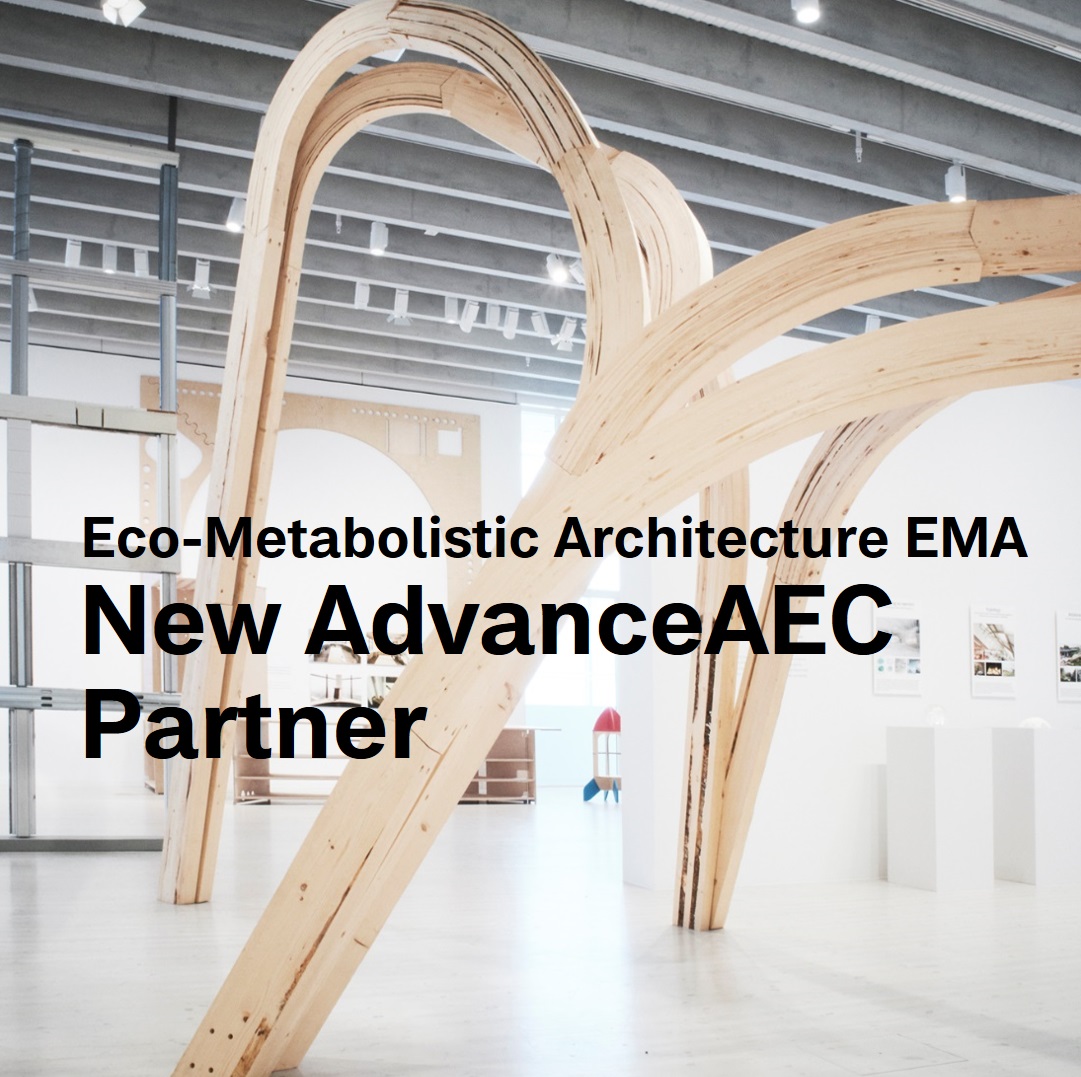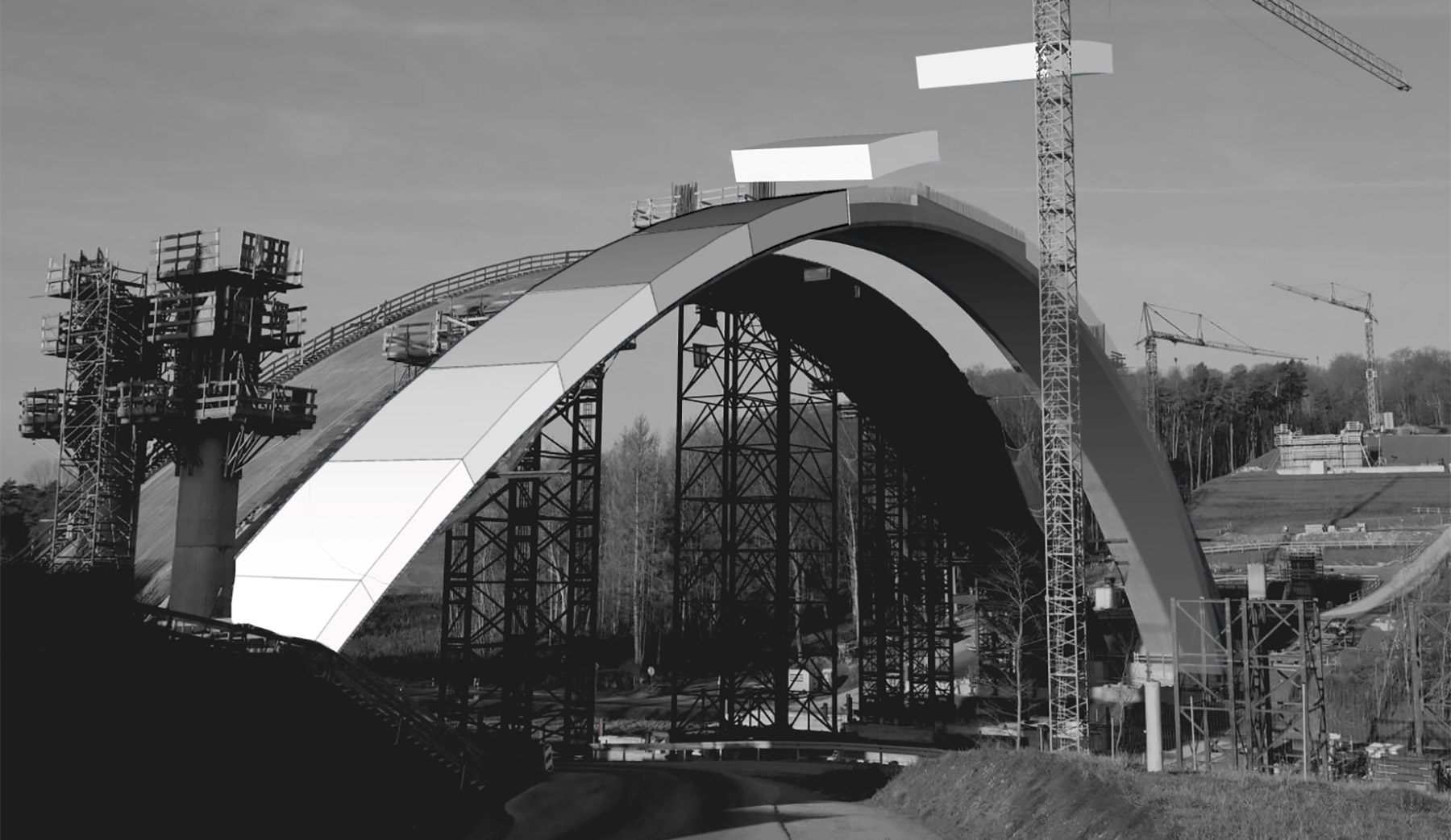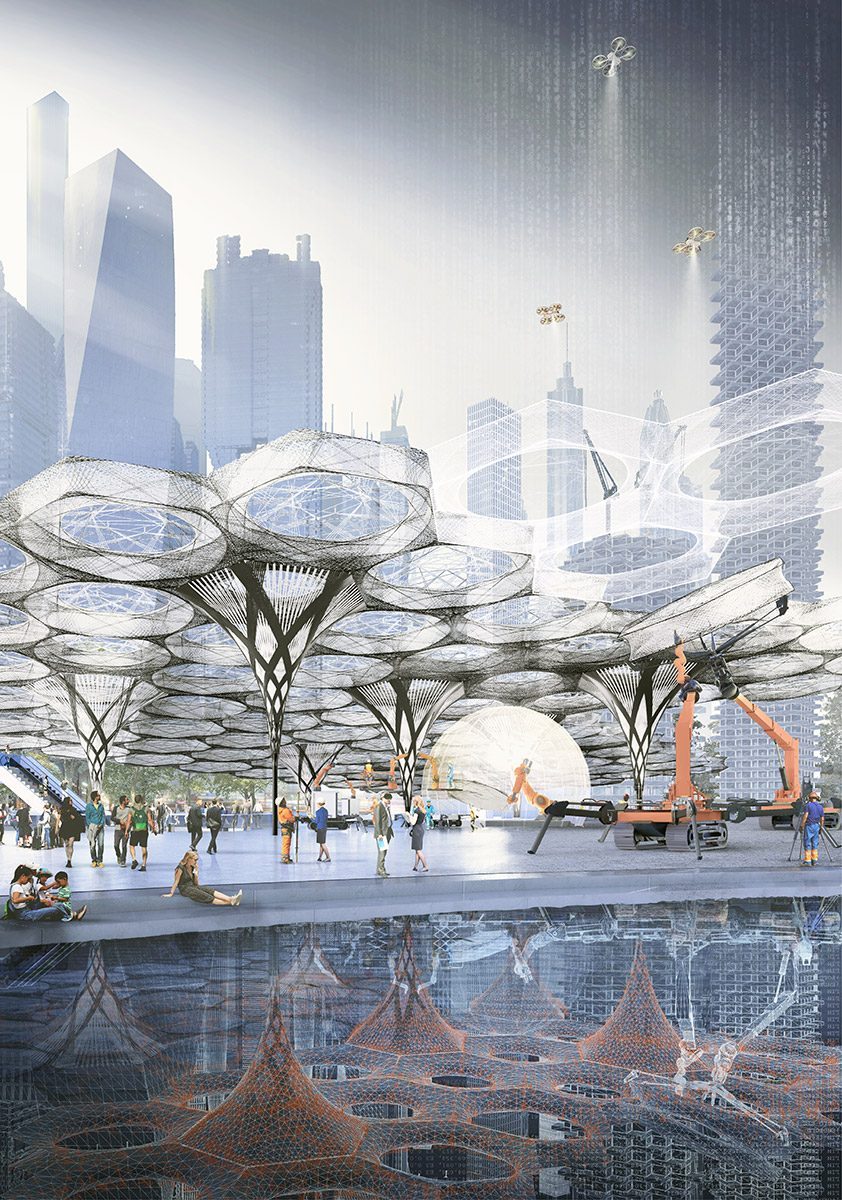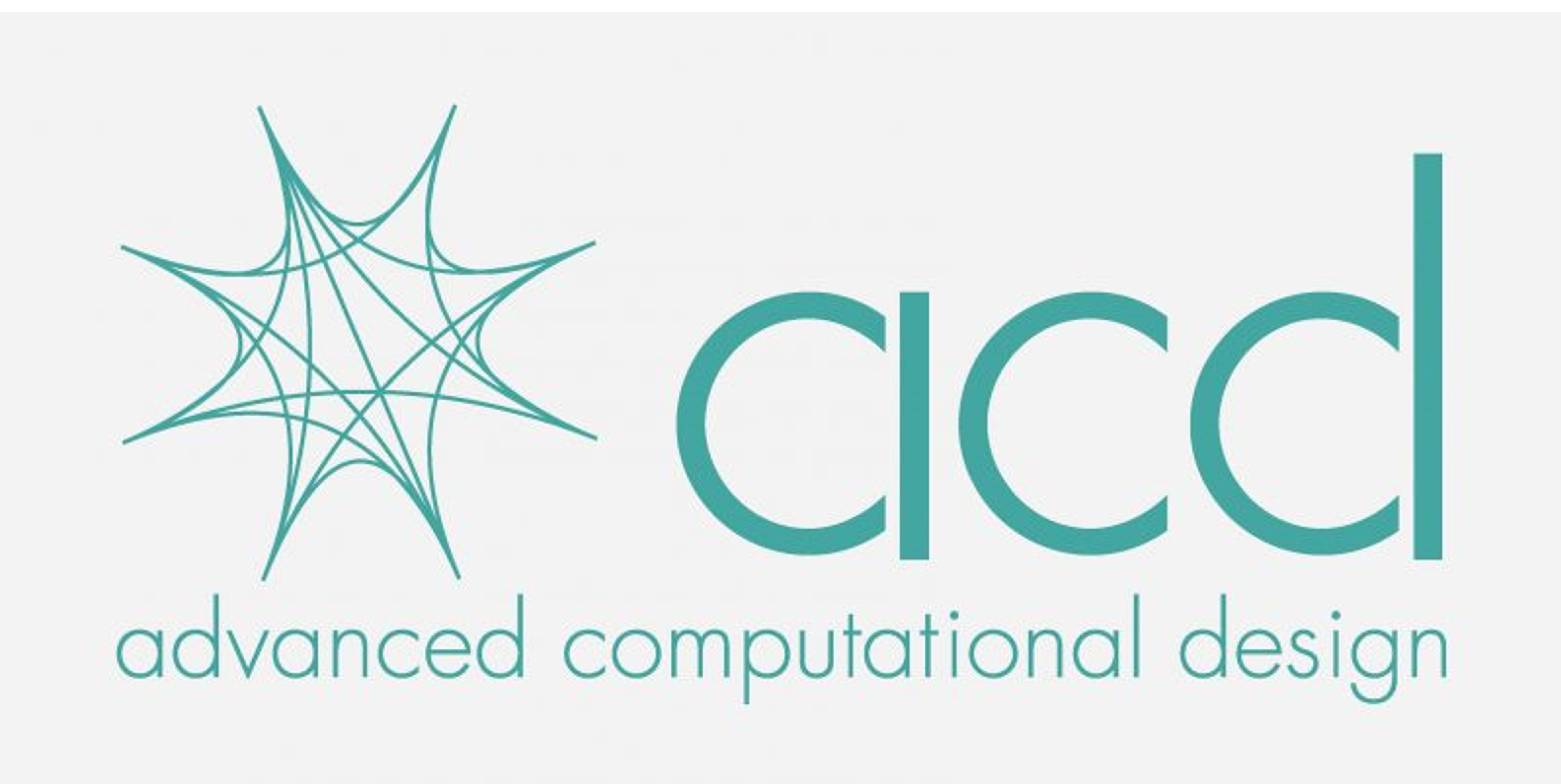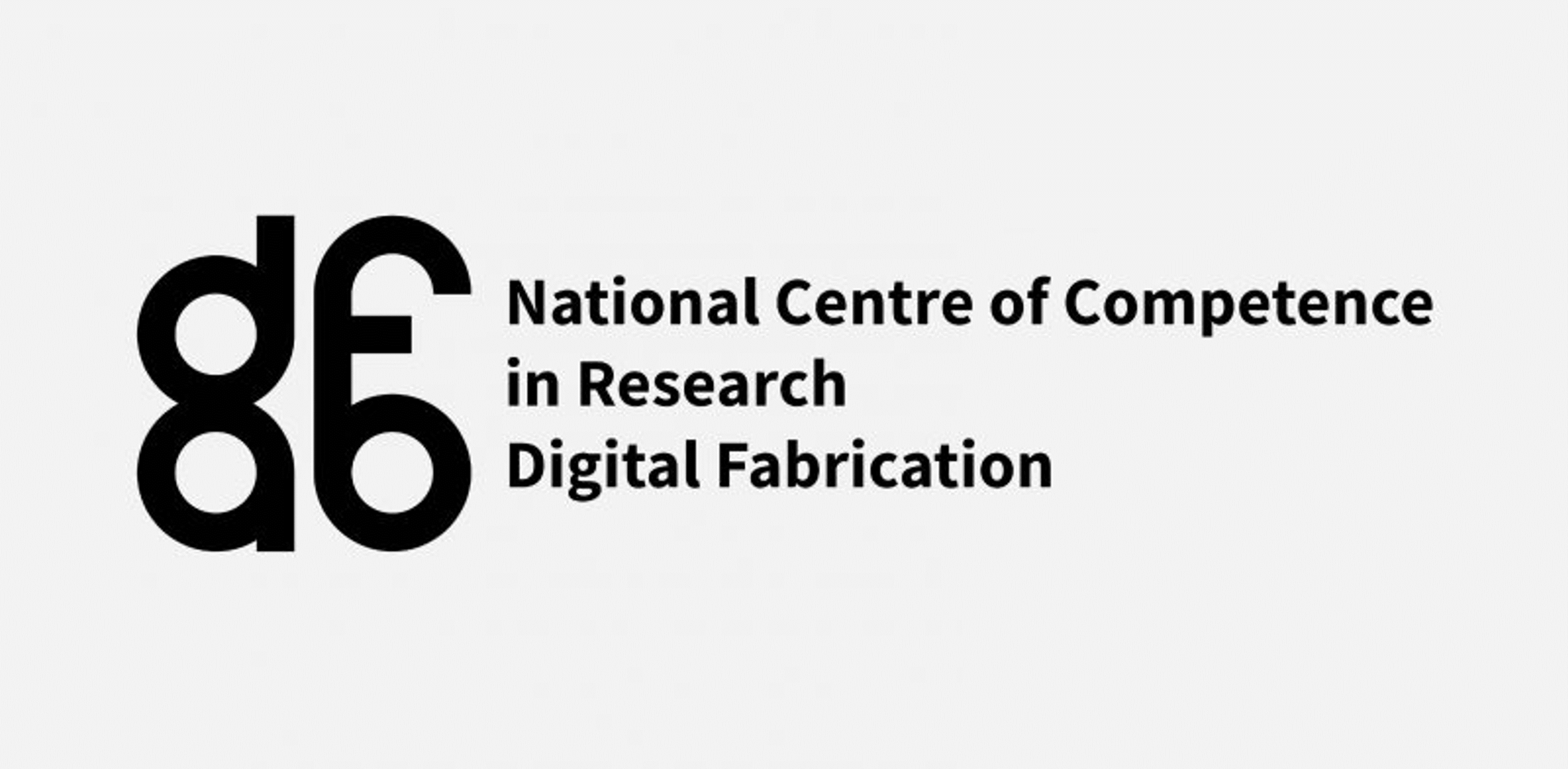MAISON FIBRE – BIENNALE ARCHITETTURA 2021
17th International Architecture Exhibition – La Biennale di Venezia 2021
TOWARDS A NOVEL MATERIAL CULTURE
Maison Fibre, exhibited at the 17th International Architecture Exhibition – La Biennale di Venezia 2021, explores an alternative approach to the design and construction of future habitable spaces. In response to the exhibition theme “How will we live together?”, the Institute for Computational Design and Construction (ICD) and the Institute of Building Structures and Structural Design (ITKE) of the Cluster of Excellence IntCDC at the University of Stuttgart present a full-scale inhabitable installation made entirely from robotically produced, fibrous building elements, constituting the very first multi-story structure of its kind.
As the central display of their project on “Material Culture”, Maison Fibre offers visitors the intense material experience and spatial expression of future, highly dematerialized structures, where each building element can be locally made from just a few kilos of construction material. Compared to Le Corbusier’s Maison Dom-Ino as a role model for 20th century architecture, the weight footprint of Maison Fibre is reduced fiftyfold and points toward a novel material culture in architecture, as well as the related ecological (material and energy), economic (value chains and knowledge production), technical (digital technologies and robotics), and sociocultural matters entailed herein.
RETHINKING THE PHYSICAL SUBSTRATE FOR LIVING TOGETHER
We spend 87 percent of our lives in buildings. Buildings constitute the physical substrate for living together, and it is precisely this materiality and materialization of buildings that poses one of the most important ecological and social challenges to society. The question of how people will live together in the future is thus intrinsically linked to the question of the future of building. Construction has become one of the most materially intense and environmentally detrimental human activities. The per capita consumption of construction materials for load-bearing structures alone, which account for more than half of the materials used in buildings, has multiplied over the last century. Building in the present form, which prioritizes simple construction processes over saving material and resources, no longer seems sustainable. New approaches are urgently needed. Nature provides just such a paradigmatic alternative: Almost all load-bearing structures in biology are fibrous systems, in which the fiber organization, directionality, and density are finely calibrated with the occurring forces. The resulting high level of morphological differentiation, functionality, and related resource efficiency are emblematic of natural structures. The biomimetic principles of using “less material” by having “more form” have been investigated for many years by the project team at the University of Stuttgart. Fibrous construction offers a profoundly different material approach for building future human habitats. More Information: https://www.intcdc.uni-
